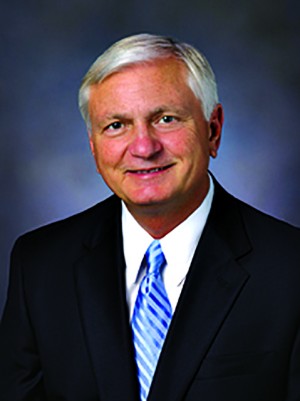Shannon's Window: PSC's funding metrics and the tale of the tape
- July 28, 2015
- / Shannon Nickinson
- / economy

Ed Meadows knew for more than a year that performance based funding would not be kind to Pensacola State College.
He was right.
The college’s performance on the new state standards meant PSC lost $613,000 of their base funding — which is $34,093,373 a year for 2015-2016. PSC’s total budget — including state funding, tuition and fees — is $54 million.
So Meadows, president of the college, said “we began working on a number of initiatives for the two measure we have the most control over — graduation rate and retention rate.”
They also decrease the number of temporary employees, cut back on travel and relied on anticipated savings from the campus energy conservation program to minimize the impact the funding decrease would have on students.
“There’s not going to be any adverse impact on students this year and we fully expect to the get the $613,000 back after submitting our plan and showing our progress,” Meadows said.
By Sept. 1, colleges must submit to the state their improvement plans. In December they will give their first report. If PSC shows progress, they will get half of the money withheld back.
Reaching out to students
The college must submit a second report in April.
Performance metrics
Colleges will be scored based on four categories:
— Completion rates for students.
— Retention rates for students.
— Job placement.
— Continuing education for graduates and the entry-level wages for graduates.
One of the biggest challenges, Meadows said, was that the performance of 1,700 students out of PSC’s 14,000 students was the measuring stick the state used.
Once those students were identified, Meadows says staff did a calling campaign for students who had completed requirements but failed to apply for graduation. They also reached out to students who were within two or three courses of graduation to persuade them to finish.
“If they had a financial issue, we made some scholarship funds available to help them complete,” Meadows said.
In addition to adding more advisors on staff, PSC is using a dashboard to track students and if a student sends up a red signal — absenteeism, dropping out after one semester, midterm grades not being what they should be — “we’ll do some intervention strategies to complete on time and graduate.”
Another benefit of this effort is, Meadows believes, that if these interventions are successful for this group of students, they would be successful for other students on campus as well.
Getting it right
The sting that PSC feels is the same as what befell the University of West Florida in its first year of performance based funding.
UWF lost $675,595 in base funding in the first year it had performance based funding. Last year it made strides and got the funding to show for it.
Meadows noted some of the same issues that UWF President Judy Bense said hindered UWF in its performance on state metrics.
A below state average average wage in the Pensacola metro area, our geographic proximity to Alabama, which draws students into another state for employment after graduation, and the prevalence of non-traditional and returning students who don’t complete in the typical two- or four-year tracks hurt both institutions.
The metric used by the state found that entry level wages for a PSC graduate with an associate’s degree is $34,216.
But the median income in the Pensacola metro area — which includes Escambia and Santa Rosa counties — is $43,918. Half of the people working make more than that.
And half make less.
Data from the Institute’s Metro Report found that only 10.4 percent of the people in Escambia County — and 9.4 percent of the people in Santa Rosa County — have an associate’s degree.
And in both counties only about 15 percent of the population holds a bachelor’s degree.
The Institute’s senior fellow, Rick Harper, noted that it is specific skill sets that enhance a student’s earning power, not just the level of degree after their name.
Meadows noted that more than 61 percent of PSC students are females and large percentage of those are single parents returning to college to qualify for a career,” he said. “We have a very diverse student population because of the diversity of vocational programs we offer. PSC attracts non-traditional students and most of those continue to work full time while they pursue retraining.”
About 1 in 3 of the families in our area are led by single parents — and most but not all of those are led by women.
Women in the Escambia County job market see a median income of $32,151; in Santa Rosa, they see a median income of $37,370, according to the Metro Report.
If education is the key to a job that pays a better wage, too few of our neighbors are getting that chance. And if our neighbors are women, the deck is stacked even less in their favor.
Meadows said PSC would not deviate from its open-door admissions policy.
“Our mission to serve the nontraditional students,” he said. “We’re not going to teach to the test and we’re not only going to enroll students we think will have a high degree of likelihood of completion.”
That’s good news.
Because in a shifting workforce — one that increasingly requires workers with nimble skills and competencies in specific areas — we need to get as many people through the schoolhouse door as we can.

 CivicCon launches with a look at good growth in cities
CivicCon launches with a look at good growth in cities
 Building stronger brains one baby, one parent at a time
Building stronger brains one baby, one parent at a time
 SCI debuts commercial on Early Learning City
SCI debuts commercial on Early Learning City
 Entrecon: World class speakers and an opportunity to sharpen skills
Entrecon: World class speakers and an opportunity to sharpen skills
 PYP Quality of Life survey 2017
PYP Quality of Life survey 2017
 EntreCon Pensacola 2016: A look back
EntreCon Pensacola 2016: A look back
 Leadership tip: getting better employee takeaways
Leadership tip: getting better employee takeaways
 Leadership tip: be interested instead of interesting
Leadership tip: be interested instead of interesting
 Leadership tip: delivering difficult messages
Leadership tip: delivering difficult messages
 Brain Bags boost Arc, Early Childhood Court programs
Brain Bags boost Arc, Early Childhood Court programs